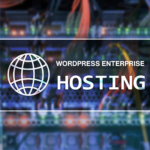Navigating your business and connecting with clients hinges largely on a robust website interface, making a reliable content management system essential. You may feel married to WordPress, but a “headless” approach could allow you to develop greater flexibility and design custom user experiences to reflect your unique brand.
What Is the ‘Headless’ WordPress Approach?
A headless WordPress site is a website that uses WordPress only for the back-end portion of its content management. In traditional WordPress, the front end and back end are tightly linked, but a headless approach frees you up to use a different technology for the front end.
Headless WordPress uses application programming interfaces, particularly RESTful APIs, to send content from the WordPress back end to the front end. This means content can be displayed on various platforms, not just traditional WordPress or even other websites. This approach suits websites that need high performance and speed or websites with unique offerings that require a similarly unique user interface, different from standard WordPress themes.
The headless approach has several benefits for teams and their sites, including:
• Enhanced Flexibility. A headless approach frees developers to use any technology they wish to create the front end, leading to more innovative and customized designs.
• Enhanced Performance. A headless approach done well often results in faster websites because the front end can be optimized separately.
• Enhanced Security. With less direct interaction with the WordPress back end, there’s a reduced risk of security breaches.
What Are the Challenges of Using WordPress as a Headless CMS?
When you migrate WordPress to a headless CMS approach, integration challenges may arise.
To start, teams will need knowledge of both WordPress and their chosen front-end technology. This can be a steep learning curve for developers, and it can result in higher training and development costs. There will also be a learning curve for clients and end users who may have become accustomed to the traditional WordPress interface.
The separation of the front end and back end also increases the complexity of the system architecture. This can make debugging and maintenance more challenging. Many WordPress plug-ins are designed for a traditional setup and may not work properly or require additional customization in a headless environment. Ensuring good SEO performance may require your team to manually implement SEO best practices on the front end.
All these potential extra challenges make the integration process more time-consuming and complex. However, if your team can establish effective integration and practice knowledgeable maintenance, there’s no reason your headless WordPress site can’t be your best one yet.
4 Strategies for (Almost) Seamless Headless WordPress Integration
When you convert WordPress to a headless alternative, here are some best practices you will need in your playbook:
1. Focus on your APIs.
Integrating APIs is crucial for making headless WordPress implementation work, ensuring seamless content delivery from the back end to the various front-end platforms in your stack. Focus on creating a well-structured, efficient API (like REST or GraphQL). It will help smooth data transfer, optimize performance, and reduce load times.
2. Keep your front end minimal.
While you’re having fun customizing your front-end experience, be mindful of how much information you’re loading up. Implement strategies to fetch only the necessary data you need and use techniques such as lazy loading for images and content. This will free up room and keep your integrations performing efficiently. You can also paginate data and use caching mechanisms to avoid overloading the front end with too much information at once and reduce the number of requests to the server.
3. Prioritize security.
The ideal result of using WordPress as a headless CMS is that you’ll be able to reach a wider audience with multiplatform content distribution. Security will be a vital piece of that puzzle, ensuring you can serve those people without putting anyone or anything at risk. That’s why Ndevr’s focus on security ensures robust protection against breaches, a critical aspect of any modern web solution. Our support doesn’t end with the initial migration of WordPress to a headless CMS; we ensure continuous support for optimum security.
4. Choose complementary technologies.
Decisions are everything when transitioning from a platform you (and your clients) know so well. For a headless website, you will need to choose a front-end technology that complements the headless architecture. Modern JavaScript frameworks like React or Vue.js are often more efficient and can handle dynamic content more effectively, contributing to better performance.
What Does Ndevr Know About the Headless WordPress Setup?
Ndevr has a lot of experience helping teams and chief technology officers who are experiencing integration challenges. We have expertise in multiple front-end technologies, including Internet of Things integrations, allowing you to create innovative, custom user interfaces, such as for this gaming site, Gold Derby.
Ndevr support is itself custom-made. We can start by helping you understand the nuances of a headless WordPress setup and then help you strategize how to best integrate it into your existing systems and processes. If custom development is in your future, we can assist you in developing and implementing a tailor-made integration solution.
Once set up, our work continues. We offer training sessions and support materials to get your team up to speed. From there, we empower your people to manage and maintain their headless platforms effectively, reducing dependency on external support for day-to-day operations and giving you peace of mind that your site is secure and up to date.




